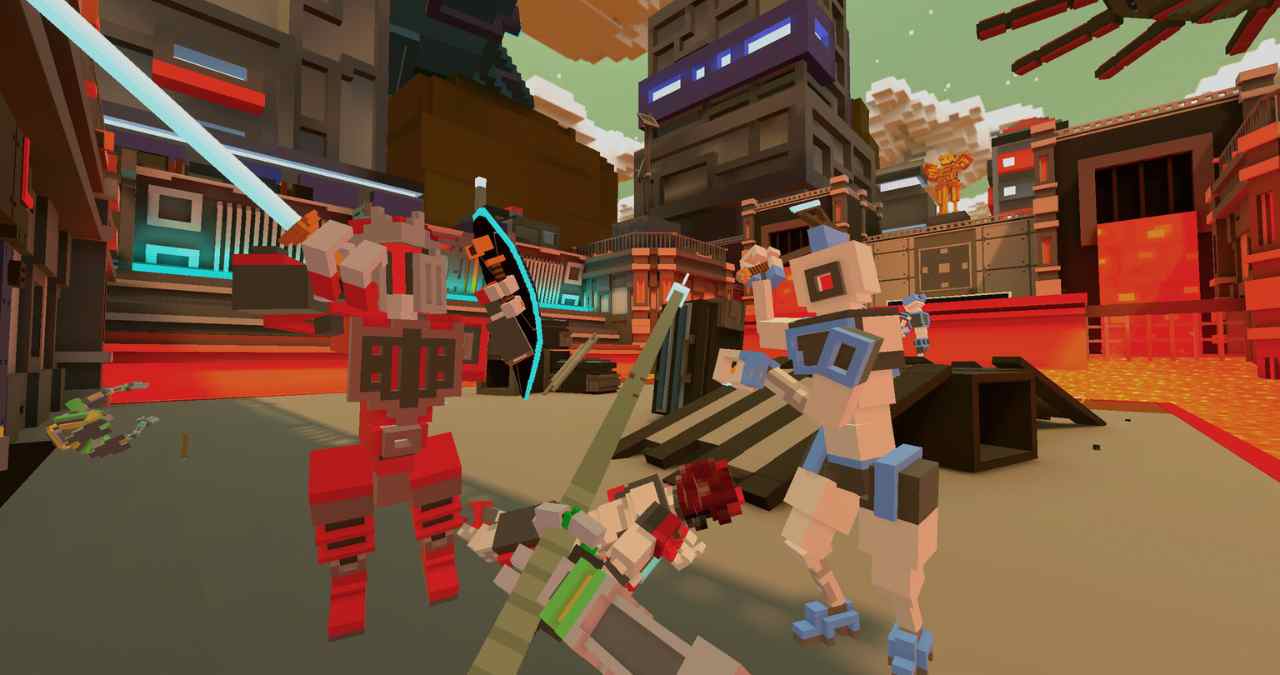Clone Drone in the Danger Zone just got a lot more vertical. The game’s latest update brings a new skyscraper environment into the mix, overhauling how players move and fight in VR. It’s not just more of the same the addition of aerial mechanics changes the pacing and spatial logic of the game’s arena brawls.
What started as a flat, dodge-and-slash gladiator sim has now evolved into something closer to a parkour-powered robot showdown. With floating platforms, climbable walls, and multi-tiered layouts, this update makes verticality central to the chaos.
Skyscraper Arenas Add New Layer of Strategy
The standout feature is the new skyscraper map set, where players aren’t just fighting on solid ground anymore. Combat now plays out across suspended walkways, lift pads, and fall hazards. Each match becomes a balancing act between offense and survival as the environment itself turns into a weapon.
Enemies can ambush from above or get knocked off ledges entirely. That adds a more dynamic flow to fights, especially in modes where enemy placement isn’t fixed. It also puts more pressure on spatial awareness. Where you stand and how you recover matters more than ever.
Climbing and Jumping Rework Player Movement
To support the vertical environments, the devs have retooled how climbing and jumping work in VR. Players can now grab ledges and scale walls using motion controls, adding more control over movement without sacrificing the arcade pacing.
What’s interesting is that these traversal systems aren’t just for exploring. They’re baked into combat. Climbing can be defensive, letting you escape tight spots. Or offensive, giving you elevation for ranged attacks or aerial slashes. It pushes players to think in 3D, not just side-to-side.
VR Implementation Feels Tight and Responsive
The game’s VR mode continues to improve, and the skyscraper update reinforces how polished the experience has become. Movement feels physical but never clunky. You can move quickly without disorientation, thanks to clear design and clean visual feedback.
Enemy tracking and hit detection hold up even when fights get chaotic. And despite the added verticality, the game avoids common VR pitfalls like awkward jumping physics or motion sickness. It’s not a simulation it’s still an arcade-style battler but it uses VR in ways that feel intentional and reactive.
A Natural Evolution for the Game’s VR Combat
This isn’t a game trying to reinvent itself. The skyscraper update builds naturally on what’s already there, giving long-time players a fresh challenge without shifting the tone. If anything, it amplifies the game’s core loop fast, reactive combat with ridiculous robotic violence by layering in new ways to move, dodge, and surprise.
It’s not just more space. It’s more dimension. That shift from flat to vertical might seem small, but it adds depth to a game that thrives on momentum and adaptation. Whether in standard or VR mode, Clone Drone in the Danger Zone continues to find new ways to make its metal mayhem feel fresh.
Virtual Reality Explorer & Game Reviewer
Always the first to plug in. VRSCOUT dives head-first into the most immersive VR worlds, analyzing mechanics, comfort, innovation, and that elusive “presence” factor. If he says it’s worth it, it probably is.




